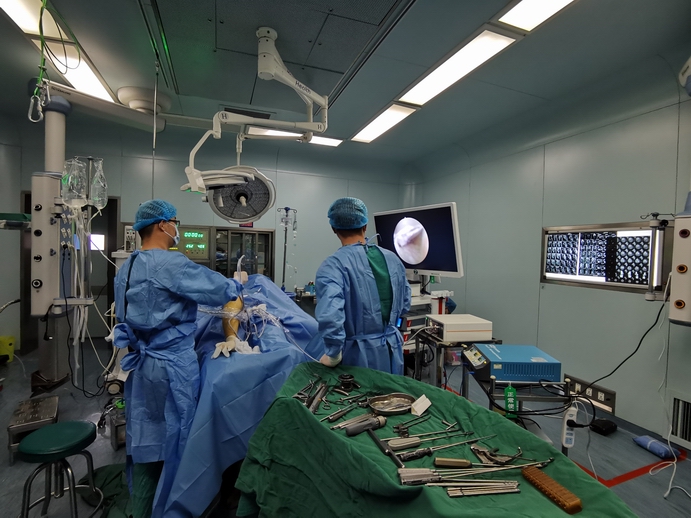Exploring the Benefits and Features of Arthroscopy HD Camera System
Arthroscopy is a minimally invasive surgical technique that enables orthopedic surgeons to diagnose and treat joint-related conditions. It involves inserting a small camera, known as an arthroscope, into the joint space, allowing the surgeon to view the area in detail and perform surgical procedures using specialized instruments. Arthroscopy has revolutionized the field of orthopedic surgery and has become an essential tool in the diagnosis and treatment of various joint disorders.
The success of arthroscopy depends on the quality of the images produced by the arthroscopy camera system. The camera system used in arthroscopy consists of several components, including the camera head, light source, and monitor. Among these, the camera head is the most critical component as it determines the clarity and resolution of the images.

Advancements in technology have led to the development of high-definition (HD) arthroscopy camera systems. These systems are designed to provide superior image quality, enabling surgeons to perform procedures with greater precision and accuracy. HD arthroscopy camera systems use digital imaging technology to produce detailed and clear images, making it easier for surgeons to visualize the joint and surrounding tissues.
One of the key features of HD arthroscopy camera systems is their ability to produce high-resolution images, even in low-light conditions. This is achieved through the use of powerful light sources, which provide consistent and bright illumination of the joint space. The camera heads used in these systems are equipped with high-quality image sensors and lenses, which work together to capture sharp and detailed images of the joint.
Another important feature of HD arthroscopy camera systems is their compatibility with a range of arthroscopic instruments. This enables surgeons to perform a variety of procedures using the same camera system, reducing the need for multiple systems and instruments. The systems are also designed to be user-friendly, with intuitive controls and menus, making them easy to operate and adjust during procedures.
HD arthroscopy camera systems have a wide range of applications in the field of orthopedic surgery. They are commonly used in the diagnosis and treatment of conditions such as torn ligaments, cartilage damage, and joint inflammation. They are also used in procedures such as rotator cuff repair, meniscus repair, and ACL reconstruction.
In conclusion, HD arthroscopy camera systems are an essential tool in modern orthopedic surgery. They provide surgeons with high-resolution, detailed images of the joint, enabling them to perform procedures with greater accuracy and precision. As technology continues to advance, we can expect to see further improvements in the quality and capabilities of arthroscopy camera systems, leading to better outcomes for patients.



Leave a message